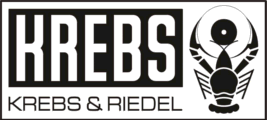Tech Talk

What is “Aluminum Oxide Ceramic”?
Ceramic abrasive is the generic term which has been given to the aluminum oxide produced by the Sol-Gel process. There are apparently two types of such abrasive mineral on the market; “SG” (which stands for Seeded-Gel) manufactured by the Norton Company and “Cubitron” manufactured by the 3M Company. 3M has produced the Cubitron grain commercially since the late 1970s and used it exclusively in coated abrasive products. Norton launched their SG and Cubitron grain is found in vitrified aluminum oxide products of the world’s abrasive product manufacturers. The process used to manufacture the ceramic aluminum oxide grain produces a “solid” crystal of aluminum oxide with a great deal less friability than typically found in the fused aluminum oxide. However, the sharpness of the ceramic abrasive is much longer lasting than the traditional fused aluminum oxide. The Sol-Gel process is very much like growing crystals in a supersaturated solution and has the potential to allow the manufacturer to produce mineral grains to a given shape and aspect ration, a feature never before found in an abrasive grain mineral. Perhaps one day we might find grinding wheels manufactured by orienting columnar grains so that their best cutting action and wear resistance is preferentially positioned for optimum performance. Presently, the Norton Company and others are combining the properties of the ceramic and fused aluminum oxide into vitrified grinding wheels for precision grinding. Pure SG wheels tended to produce high residual stresses in heat and crack sensitive materials so the pure SG wheels are generally used in rough grinding operations. The combination of the ceramic and the fused aluminum oxide tends to produce a wheel more suited to fine precision grinding. The wheel exhibits a high level of sharpness, an aggressive cutting action, good form holding, and long life. The properties of the SG grain are complemented by the friability of the fused aluminum oxide. The grade designation is typically written, for example, SG2 (20 percent alumina mix) SG5 (50 percent alumina mix). This is a very exciting technology in that a new, relatively low cost abrasive has inserted itself between the conventional abrasives and the very expensive superabrasives with measurable improvements in grinding by a factor of three to five times.